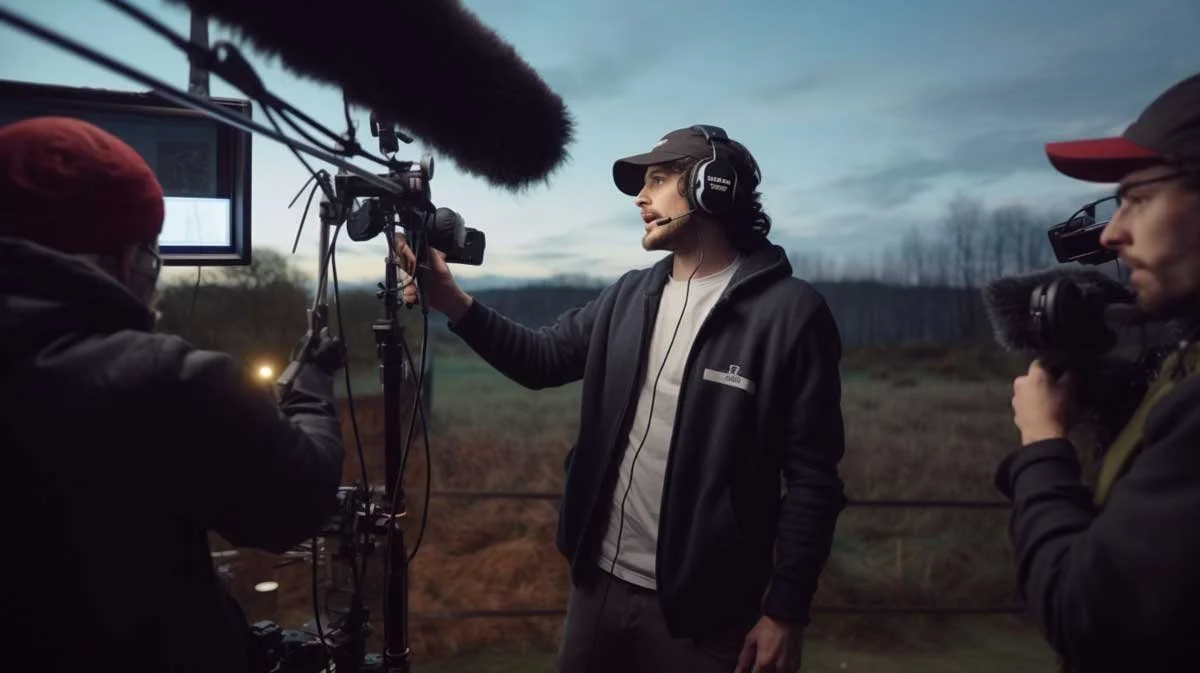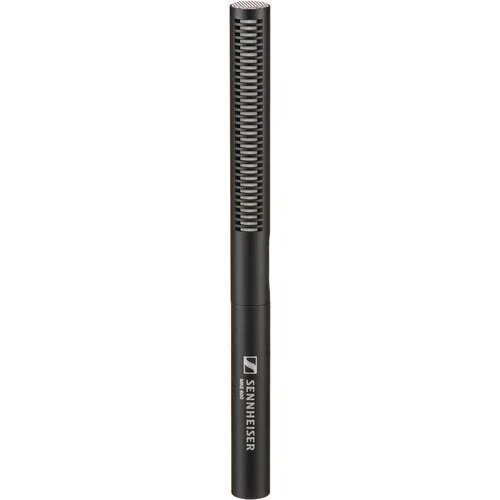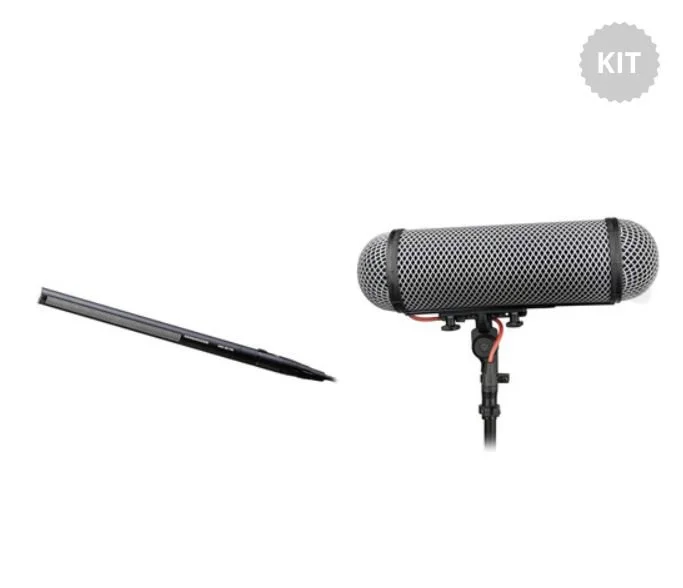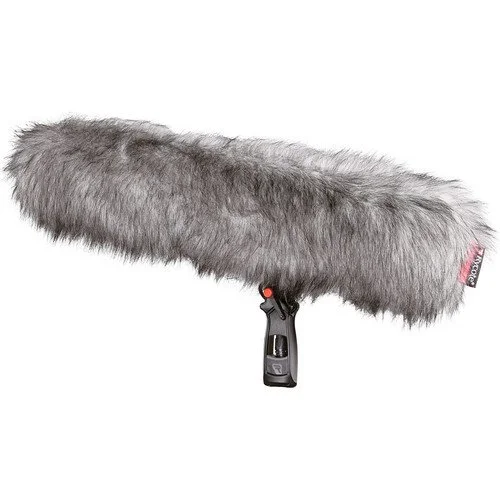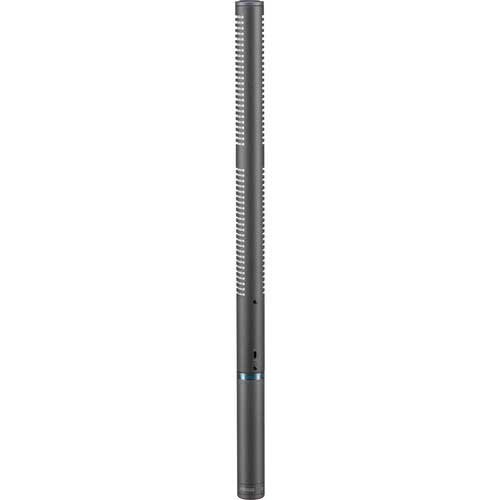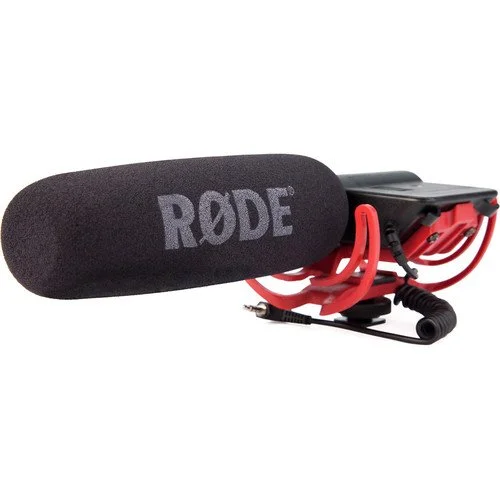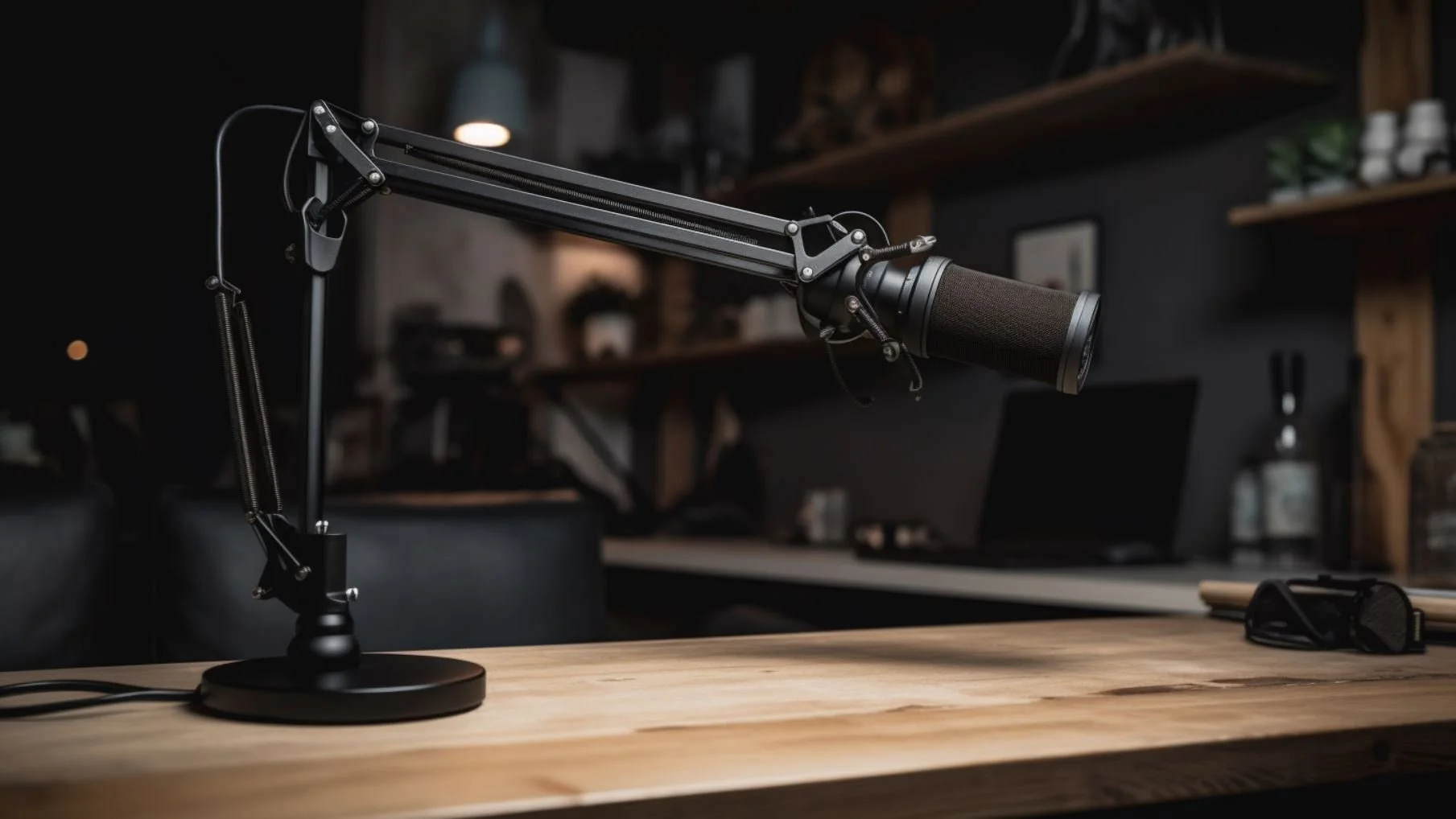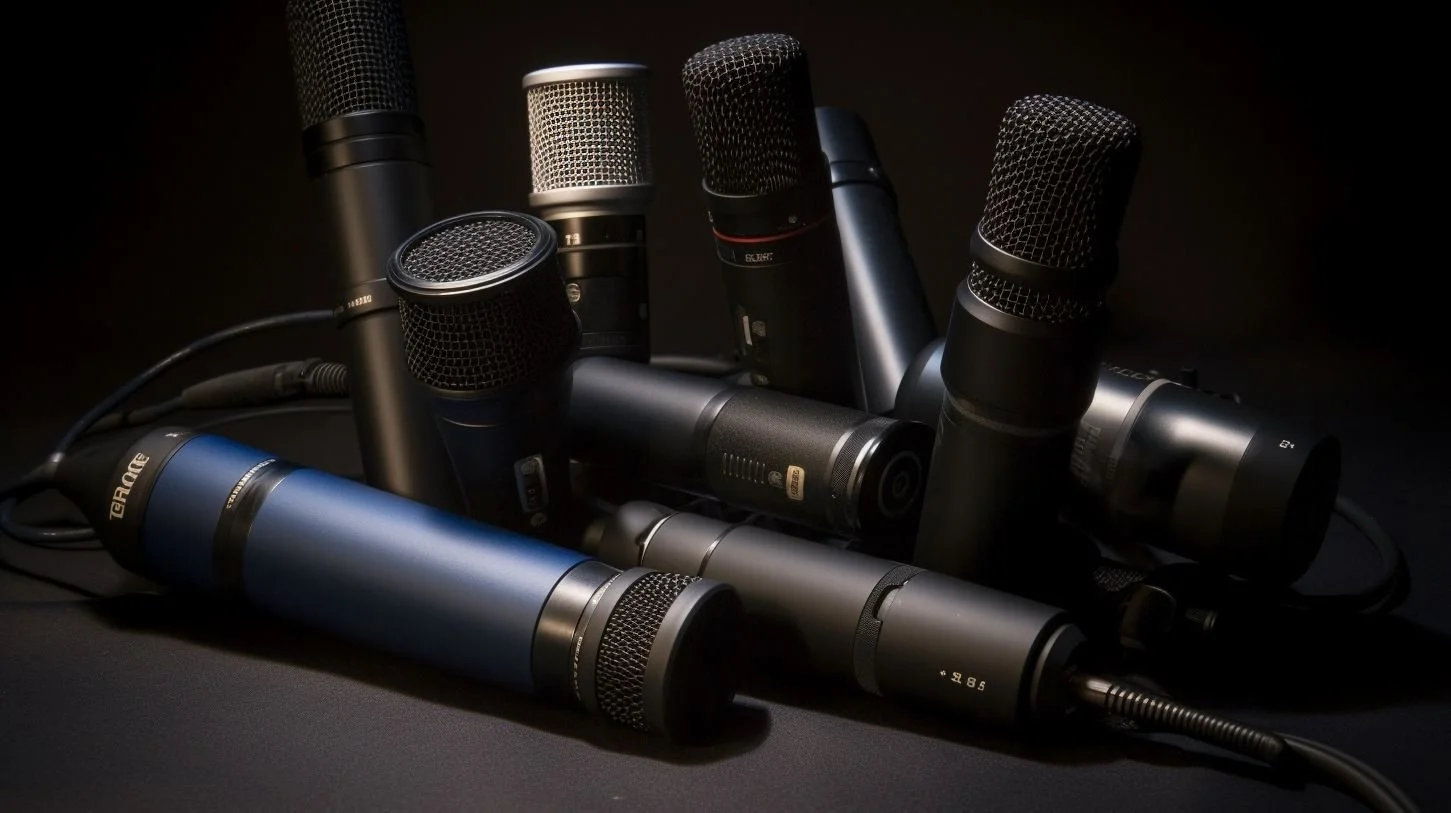Best Microphone for Filmmaking
Cinematic Sounds: Unveiling the Best Microphone for Your Filmmaking Vision
In the intricate world of filmmaking, where every scene is meticulously crafted to evoke emotions and captivate audiences, the importance of pristine audio quality cannot be overstated. Whether capturing intimate dialogues, immersive ambient sounds, or dynamic action sequences, choosing the right microphone is paramount to bringing your cinematic vision to life.
In this comprehensive guide, we delve into the realm of microphone technology to unveil the best options tailored specifically for filmmaking. From versatile shotgun mics designed to excel in various shooting scenarios and scene framings to compact on-camera solutions ideal for run-and-gun filmmakers, we leave no stone unturned in our quest to equip you with the tools you need to elevate your audio recording capabilities.
Join us as we navigate through the nuances of shotgun microphones, exploring their unique characteristics, optimal usage scenarios, and indispensable features. Whether you're a seasoned filmmaker seeking to expand your arsenal of audio gear or an aspiring creator embarking on your cinematic journey, this guide is your roadmap to achieving professional-grade audio excellence in every frame.
Disclaimer: This blog post contains affiliate links. If you make a purchase through one of these links, I may receive a small commission at no additional cost to you. This helps support my work and allows me to continue providing valuable content. Thank you for your support!
Best Bang for Your Buck
Sennheiser MKE 600
A top choice for filmmakers looking for quality audio without breaking the bank.
Its high sensitivity and low-noise circuitry ensure superior sound, even with noisy camera preamps.
With the option for battery power when phantom power isn't available and a low-cut rumble filter for enhanced clarity, it's versatile for various shooting scenarios.
Best On Camera
Rode VideoMic Pro+
The Rode VideoMic Pro+ is a robust, lightweight solution for run-and-gun filmmakers.
The mic includes a foam windscreen, furry windjammer, cold shoe mount, and gain and tone controls.
Audio quality and off-axis rejection are impressive with only 14dB of self-noise.
Best for Long/Establishing Shots
Sennheiser MKH 8070
Wide-angle shots require mics to be far away from their subjects to keep them from entering the frame.
Long shotgun microphones are built to perform under these circumstances and the Sennheiser MKH 8070 is the best in the business.
Featuring ultra-low self-noise (8dB), the most off-axis rejection of any shotgun mic, and legendary Sennheiser sound quality, the 8070 is truly a beast.
Best for Tight-Full Shots
Sennheiser MKH 416
Used in countless Hollywood films, the Sennheiser MKH 416’s sound has achieved legendary status and become a ubiquitous choice among filmmakers.
Renowned for its exceptional shotgun design, the Sennheiser MKH 416 excels in isolating and capturing targeted audio sources with remarkable clarity, even in challenging on-set environments.
With a frequency response tailored for dialogue and low self-noise, the MKH 416 consistently delivers unparalleled audio fidelity, making it the preferred choice among sound professionals.
Quick Links:
Tight/Full Shots:
Best: Sennheiser MKH 416 - With sharp directivity, low noise, and strong output, this moisture-resistant shotgun microphone delivers mix-ready sound quality ideal for tight to full shot framing in professional film, TV, or location recording, while its resistance to adverse environmental conditions ensures reliability in high-pressure gigs.
Budget: Sennheiser MKE 600 - Offering professional-grade audio quality, versatility, and affordability, this XLR shotgun microphone features high sensitivity, low-noise circuitry, a battery power option, low-cut rumble filter, lightweight design, and a foam windscreen for reduced wind noise.
Long/Establishing Shots:
Best: Sennheiser MKH 8070 - A budget-friendly choice. With a cardioid dynamic design, pop filter, and rugged construction, it's perfect for narrative creators with only a little to spend.
Budget: Audio Technica AT8035 - For value-conscious creators, the Rode PodMic delivers professional-grade audio. Its dynamic XLR design and tight cardioid polar pattern excel in capturing clear speech while reducing background noise. Compact and robust, it's an excellent choice for high-quality narration recording.
On Camera:
Best: Rode VideoMic Pro+ - A lightweight solution with impressive audio quality, offering features such as a foam windscreen, furry windjammer, cold shoe mount, gain and tone controls, and exceptional off-axis rejection with only 14dB of self-noise, perfect for run-and-gun filmmakers.
Budget: Rode VideoMic - This shotgun microphone, featuring battery powering, extended low-end response, and customizable audio settings, is an excellent budget pick for indie filmmakers, offering directional sound pickup, easy hookup to the camera, long battery life, bass roll-off, selectable pad, integrated shockmount, and windscreen to minimize wind noise.
Reviews
Sennheiser MKH 416
Renowned as an iconic fixture in the world of audio production, the Sennheiser MKH 416 has earned its place as the go-to choice for discerning filmmakers, documentary makers, television producers, and voiceover artists alike. Its status as an industry standard speaks volumes about its exceptional performance and unwavering reliability over decades of use.
One of the standout features of the MKH 416 is its moisture resistance, engineered to withstand even the harshest conditions with ease.
This ensures that regardless of the environment, from bustling city streets to remote outdoor locations, the MKH 416 consistently delivers pristine audio reproduction with unparalleled clarity and fidelity.
The sound quality produced by the MKH 416 is nothing short of extraordinary. Tailor-made with precision, its frequency pattern is meticulously crafted to provide a flat midrange response with bright highs and rich lows, resulting in the iconic “movie” sound we’re so used to.
In terms of technical specifications, the MKH 416 boasts impressive figures, including an equivalent noise level of just 13 dB and a sensitivity of 25 mV/PA. This sensitivity allows the microphone to capture even the subtlest nuances of sound with remarkable detail, while the low noise floor ensures that recordings remain clean and free from unwanted artifacts, even in less than ideal acoustic environments.
One of the key advantages of the MKH 416 is its versatility. While it excels in capturing tight to full framing shots in filmmaking, its exceptional performance extends far beyond this application. Thanks to its moderate rejection pattern and well-defined sweet spot, the MKH 416 is equally adept at capturing voiceovers with unmatched clarity and presence. This dual-purpose functionality makes it a valuable asset for professionals seeking a microphone that can effortlessly transition between different recording scenarios without compromising on quality.
Built to last, the MKH 416 combines a compact and lightweight design with rugged construction, ensuring durability and reliability in even the most demanding of production environments. Its solid-state design eliminates the need for batteries, while its energy-efficient operation allows for extended recording sessions without the worry of power depletion.
Bottom Line:
The Sennheiser MKH 416 represents the pinnacle of professional audio technology, offering unmatched sound quality, versatility, and reliability that have made it an indispensable tool for audio professionals around the world. Whether capturing dialogue on a film set or recording voiceovers in a studio, the MKH 416 consistently delivers exceptional results, earning its place as a true industry standard.
Kits/Accessories:
Location Sound Blimp Kit
Includes a MKH 416 + Rycote Blimp for wind protection and easy boom pole deployment.
Mid-Side Blimp
Designed to house a MKH 416 + MKH 30, this Rycote MS Blimp is a great accessory if your production requires mid-side audio.
Sennheiser MKE 600
In the realm of budget-friendly shotgun microphones for aspiring filmmakers, the Sennheiser MKE 600 stands out as a true gem.
Despite its modest price tag, this microphone punches well above its weight class, delivering professional-grade performance and versatility that rivals more expensive options.
At the heart of its appeal lies its impressive sound quality. With a carefully crafted frequency pattern, the MKE 600 captures audio with remarkable clarity and depth, ensuring that every dialogue and ambient sound is reproduced with fidelity.
Its smooth transition in the upper range and effective low-frequency roll-off make it a reliable choice for capturing clean audio in a variety of shooting environments, from controlled indoor sets to bustling outdoor locations.
The MKE 600's design further adds to its appeal, with a compact and lightweight build that makes it easy to handle and integrate into different filming setups.
Whether mounted on a camera or a boom pole, its intuitive controls and convenient on/off switch ensure hassle-free operation, allowing filmmakers to focus on capturing the perfect shot without distractions.
In addition, Sennheiser offers an optional hairy windshield accessory, providing filmmakers with an affordable solution for minimizing wind noise during outdoor shoots. This thoughtful inclusion demonstrates Sennheiser's commitment to providing practical solutions that enhance the filmmaking experience without breaking the bank.
Bottom Line:
Overall, the Sennheiser MKE 600 represents an excellent investment for budget-conscious filmmakers looking to elevate the audio quality of their productions. With its impressive performance, user-friendly design, and thoughtful accessories, it's a microphone that punches well above its weight, delivering professional-grade results without the professional-grade price tag.
Kits/Accessories:
Furry Windjammer
The Sennheiser MZH 600 windjammer is specifically designed for the MKE 600 and will diffuse wind noise during outdoor use.
Blimp Kit
The Rycote Nano Blimp is a compact, lightweight, complete wind protection solution for the MKE 600. Includes, boom-mountable pistol grip, shock mount, blimp basket, furry windjammer, and low-profile XLR connector for clean cable management.
Sennheiser MKH 8070
The Sennheiser MKH 8070 long shotgun microphone emerges as a premier choice for capturing pristine audio from distant sources, particularly in scenarios where traditional boom mics fall short due to framing constraints.
Crafted with precision engineering and cutting-edge technology, this microphone sets the standard for professional-grade audio capture, especially in major broadcast and sporting events where clarity and reliability are paramount.
At its core, the MKH 8070 boasts a lobar pick-up pattern and enhanced directivity, allowing it to zero in on distant sound sources with unparalleled precision.
This pronounced directivity ensures that even amidst bustling crowds or noisy environments, the microphone captures the desired audio with remarkable clarity and minimal off-axis interference.
Whether it's the roar of the crowd at a stadium or the commentary of a distant speaker, the MKH 8070 excels in isolating and amplifying the desired sound while minimizing unwanted background noise.
One of the standout features of the MKH 8070 is its exceptionally low inherent self-noise and extremely low distortion. This ensures that the recorded audio remains faithful to the original source, free from any unwanted artifacts or interference. The transformerless and fully floating balanced output further enhances signal integrity, delivering a clean and pristine audio signal that's ready for mixing and post-production.
Constructed with a rugged metal housing and coated with a non-reflective Nextel® finish, the MKH 8070 is built to withstand the rigors of outdoor use, making it an ideal companion for high-pressure production environments. Its extreme weather-proof design ensures reliability even in the toughest climatic conditions, providing peace of mind to filmmakers and sound engineers alike.
Bottom Line:
The Sennheiser MKH 8070 sets a new benchmark for long shotgun microphones, offering unparalleled performance, reliability, and versatility in capturing distant sound sources with exceptional clarity and fidelity. Whether it's capturing the excitement of a live sports event or delivering crystal-clear dialogue in a broadcast setting, the MKH 8070 stands ready to elevate the audio quality of any production to professional-grade standards.
Kits/Accessories:
Blimp + Furry
The Rycote 8J blimp is one of the only wind protection options for the MKH 8070 on the market, and is the only option that includes a furry windjammer for increased wind protection.
Audio Technica AT8035
The Audio-Technica AT8035 long shotgun microphone emerges as a cost-effective yet formidable tool for filmmakers navigating diverse shooting environments.
Its extended 14.5-inch form factor and highly focused directional characteristics cater to scenarios where shorter shotgun mics falter, offering enhanced reach and precision in capturing audio.
Crafted with a delicate balance of quality and affordability, the AT8035 delivers commendable sound reproduction, albeit with slight nuances in its frequency pattern.
Exhibiting a subtle emphasis on the upper range, recordings exhibit a vibrant presence, lending clarity to dialogue and environmental soundscapes. Despite minor sharpness in busier settings, the microphone's detailed and crisp output remains adaptable to various production demands.
In terms of design, the AT8035 boasts a lightweight construction conducive to agile operation, though its susceptibility to handling noise necessitates the use of a robust shock mount, an accessory unfortunately absent from the package. Similarly, while the included windscreen offers basic protection against wind noise, investing in a higher-quality solution is recommended for optimal performance.
Bottom Line:
The Audio-Technica AT8035 offers a blend of performance and affordability, catering to the needs of indie filmmakers and videographers seeking professional-grade audio capture without exorbitant expenditure. With its capacity to deliver clear and accurate sound across a spectrum of shooting scenarios, this microphone emerges as a valuable asset in the filmmaker's toolkit, empowering creators to elevate their audiovisual narratives with confidence and precision.
Rode VideoMic Pro+
The Rode VideoMic Pro+ stands as a pinnacle of on-camera shotgun microphones, boasting superior specifications that position it as an invaluable asset for indie filmmakers seeking high-quality audio solutions. Designed with versatility and performance in mind, this robust yet lightweight microphone caters to the dynamic needs of run-and-gun filmmakers, offering a comprehensive suite of features that elevate the filmmaking experience.
At the heart of the VideoMic Pro+ lies its impressive audio quality and off-axis rejection capabilities, setting a new standard for on-camera microphones.
With just 14dB of self-noise, the microphone delivers pristine sound reproduction, capturing every nuance with clarity and precision. Whether recording dialogue, ambient sound, or environmental effects, the VideoMic Pro+ excels in preserving the integrity of the audio signal, ensuring professional-grade results in any shooting scenario.
Central to the microphone's appeal is its user-friendly design, which includes essential accessories such as a foam windscreen, furry windjammer, cold shoe mount, and intuitive gain and tone controls. These features empower filmmakers to adapt quickly to changing conditions, facilitating seamless operation and optimal performance on the field.
One standout feature of the VideoMic Pro+ is its innovative safety channel, which records a duplicate mono input at a 10dB lower level. This invaluable feature provides filmmakers with increased headroom, mitigating the risk of clipping in dynamic recording environments. Additionally, the microphone's high-frequency boost and selectable high-pass filters offer further flexibility in tailoring the audio to suit specific preferences and shooting conditions.
In practice, the VideoMic Pro+ excels across a range of camera platforms, including Nikon, Canon, and Sony mirrorless cameras. However, one minor inconvenience lies in the location of the detachable output cable, which may obstruct the use of electronic viewfinders on certain camera models.
Despite this minor drawback, the VideoMic Pro+ impresses with its ease of use and superior performance, making it a standout choice in the crowded field of on-camera microphones. With its long battery life, rechargeable lithium-ion battery, and thoughtful features, Rode has once again raised the bar for camera-mounted shotgun mics, delivering a product that embodies quality, reliability, and innovation.
Bottom Line:
The Rode VideoMic Pro+ emerges as a top contender for filmmakers seeking a versatile and high-performance on-camera microphone. With its robust construction, intuitive controls, and exceptional audio quality, this microphone offers unparalleled value for indie filmmakers and videographers across diverse shooting environments. Whether capturing dialogue on the go or recording ambient soundscapes in challenging conditions, the VideoMic Pro+ proves to be a worthy companion for every filmmaking journey.
Rode PodMic
The Rode VideoMic is a highly versatile on-camera microphone designed to meet the demands of content creators, vloggers, and filmmakers alike.
Positioned as an affordable yet professional-grade solution, this microphone offers a range of features and capabilities that make it a standout choice for a wide range of applications.
At its core, the VideoMic delivers exceptional audio quality, thanks to its directional supercardioid polar pattern.
This design allows the microphone to focus on sound sources in front of it while minimizing unwanted noise from the sides and rear.
Whether you're recording interviews, dialogue, or ambient soundscapes, the VideoMic ensures that your audio captures are clear, detailed, and immersive.
One of the key advantages of the VideoMic is its ease of use and setup. With an integrated shock mount and foam windscreen, the microphone is ready to attach directly to your DSLR, mirrorless camera, or video camera, reducing handling noise and wind interference for pristine recordings.
Additionally, the attached 3.5mm TRS cable simplifies connection to your recording device, ensuring hassle-free operation in any shooting scenario.
The VideoMic also offers a range of customizable audio settings to suit different recording environments. With switchable pad options (-10 dB, -20 dB, or flat), you can easily adjust the microphone's sensitivity to prevent distortion and clipping, even in loud or high-volume situations. The selectable bass roll-off filter further enhances audio clarity by reducing low-frequency noise from sources such as air conditioners and traffic.
In terms of power efficiency, the VideoMic impresses with its long battery life, capable of delivering up to 100 hours of operating time on a single 9V battery. The dedicated power LED provides a visual indicator of battery status, ensuring that you never miss a crucial recording opportunity due to power issues.
Bottom Line:
The Rode VideoMic stands as a testament to Rode's commitment to delivering high-quality audio solutions that are accessible to content creators and filmmakers of all levels. With its affordable price point, professional-grade performance, and user-friendly design, the VideoMic is an indispensable tool for capturing top-notch audio in any production environment. Whether you're a seasoned filmmaker or a budding vlogger, the VideoMic empowers you to unleash your creativity and tell your story with clarity and precision.
Buyer’s Guide
When it comes to capturing high-quality audio for your film projects, shotgun microphones are indispensable tools known for their directional focus and ability to capture clean and clear audio even in challenging shooting environments. In this guide, we'll focus on choosing the best shotgun microphone for your filmmaking needs and walk you through the process of selecting the right length based on the framing of your shots.
1. Understanding Shotgun Microphones:
Shotgun microphones are highly directional, capturing sound primarily from the direction they are pointed while minimizing off-axis noise.
They are commonly used in filmmaking to capture dialogue and ambient sound, especially in outdoor or noisy environments.
-
When it comes to capturing high-quality audio for your filmmaking endeavors, understanding shotgun microphones is essential.
These directional microphones are favored for their ability to isolate sound sources and reject unwanted noise, making them invaluable tools for capturing dialogue, ambiance, and sound effects on set.
In this comprehensive guide, we'll delve into the key aspects of shotgun microphones to help you make informed decisions when selecting the best microphone for your filmmaking needs.
1. What is a Shotgun Microphone?
Shotgun microphones, also known as boom microphones, are highly directional microphones designed to capture sound primarily from the direction they are pointed while minimizing off-axis noise. They feature a narrow pickup pattern that allows them to focus on specific sound sources, making them ideal for capturing dialogue and ambiance in a variety of filmmaking scenarios.
2. How Do Shotgun Microphones Work?
Shotgun microphones utilize interference tube technology to achieve their directional pickup pattern. The interference tube, typically located at the front of the microphone, helps to cancel out sound waves coming from the sides and rear of the microphone, thereby isolating the sound source in front of the microphone. This design allows shotgun microphones to capture clear and focused audio even in noisy environments.
3. Types of Shotgun Microphones:
Short Shotgun Microphones: These microphones are compact and lightweight, making them ideal for use on handheld cameras or in tight spaces. They offer moderate directionality and are suitable for close-up shots or indoor filming.
Medium Shotgun Microphones: Medium-length shotgun microphones strike a balance between size and reach. They offer extended directionality compared to short shotgun microphones and are suitable for a wide range of filmmaking applications, including outdoor shoots and medium-distance dialogue capture.
Long Shotgun Microphones: Long shotgun microphones feature extended interference tubes, allowing them to capture sound from greater distances while maintaining high directionality. They are ideal for wide shots, outdoor filming, and capturing dialogue from a distance without compromising audio quality.
4. Key Features to Consider:
Directionality: Look for a microphone with a narrow pickup pattern to ensure precise sound capture and minimal background noise.
Frequency Response: Consider the microphone's frequency response to ensure accurate reproduction of dialogue and sound effects across the audible spectrum.
Self-Noise: Check the microphone's self-noise rating to determine its ability to produce clean and noise-free audio recordings, especially in quiet or low-volume environments.
Build Quality: Opt for a microphone with a durable construction and integrated shock mount to minimize handling noise and vibrations during recording sessions.
5. Compatibility and Connectivity:
Ensure that the shotgun microphone is compatible with your filmmaking equipment, including cameras, audio recorders, and boom poles. Look for microphones with standard XLR or 3.5mm TRS connectors for seamless integration with a wide range of devices.
6. Budget Considerations:
Shotgun microphones are available at various price points, ranging from budget-friendly options to professional-grade models. Determine your budget and prioritize features based on your filmmaking requirements, ensuring that you get the best value for your investment.
2. Choosing the Right Length:
Long Shotgun Microphones: These mics are ideal for capturing dialogue from a distance while keeping the microphone and boom out of the shot. They excel in wide shots or scenes where the subject is far from the camera. Longer mics offer extended reach and are suitable for outdoor shooting or capturing sound in large spaces.
Short to Medium Length Shotgun Microphones: These mics are better suited for shots with tighter framing around the subject. They are lighter in weight, making them easier for boom operators to wield and maneuver in confined spaces. Shorter mics offer greater versatility and are suitable for indoor shooting or close-up shots with minimal background noise.
-
When it comes to selecting the perfect shotgun microphone for your filmmaking needs, understanding the importance of microphone length is crucial.
Different lengths offer distinct advantages depending on the framing of your shots, the distance from your subject, and the overall shooting conditions.
In this comprehensive guide, we'll explore the various lengths of shotgun microphones and help you determine which one is best suited for your specific filmmaking scenarios.
1. Short Shotgun Microphones:
Description: Short shotgun microphones, also known as compact or small shotgun microphones, typically range from 6 to 10 inches in length. They offer a compact and lightweight design, making them ideal for use in tight spaces or on smaller camera setups.
Advantages:
Well-suited for shots with tighter framing around the subject.
Easier for boom operators to wield due to their lightweight construction.
Ideal for indoor filming or close-up shots where space is limited.
2. Medium Shotgun Microphones:
Description: Medium shotgun microphones strike a balance between size and reach, typically ranging from 10 to 14 inches in length. They offer extended directionality compared to short shotgun microphones and are suitable for a wide range of filmmaking applications.
Advantages:
Versatile and suitable for various filming scenarios, including outdoor shoots and medium-distance dialogue capture.
Offers increased reach compared to short shotgun microphones without sacrificing maneuverability.
3. Long Shotgun Microphones:
Description: Long shotgun microphones feature extended interference tubes, allowing them to capture sound from greater distances while maintaining high directionality. They typically range from 14 to 20 inches or longer.
Advantages:
Ideal for capturing dialogue from a distance without compromising audio quality or requiring the microphone to be in the shot.
Well-suited for wide shots, outdoor filming, and capturing sound in noisy or challenging environments.
How to Choose the Right Length:
When selecting the appropriate length for your shotgun microphone, consider the following factors:
Framing of Shots: If your shots have tighter framing around the subject or if you're filming in confined spaces, a short shotgun microphone may be the best choice. For wider shots or outdoor filming where the subject is farther away, a longer shotgun microphone may be more suitable.
Distance from Subject: Consider the distance between the microphone and the subject you're recording. If the subject is relatively close to the camera, a short or medium shotgun microphone may suffice. However, if the subject is farther away, especially in outdoor or large-scale shooting environments, a long shotgun microphone will ensure optimal audio capture.
Ease of Use: Think about the practical aspects of operating the microphone, including weight, maneuverability, and mounting options. Choose a length that offers the right balance of reach and ease of use for your specific filming setup and requirements.
3. Framing Considerations:
Determine the framing of your shots: Are you shooting wide, expansive scenes with the subject positioned far from the camera, or are you capturing close-up shots with a tight focus on the subject's face or actions?
For wide shots or scenes with distant subjects, opt for a long shotgun microphone to ensure clear and intelligible dialogue without compromising the visual composition.
For close-up shots or scenes with tight framing, choose a short to medium length shotgun microphone to maintain audio clarity while keeping the microphone and boom out of the shot.
-
When selecting a shotgun microphone for your filmmaking projects, it's crucial to consider how the microphone's length and directionality will interact with the framing of your shots.
Framing considerations play a significant role in determining the effectiveness and practicality of using a shotgun microphone in various filming scenarios.
In this comprehensive guide, we'll explore essential factors to consider when choosing and positioning a shotgun microphone based on the framing of your shots.
1. Wide Shots:
Description: Wide shots capture expansive scenes and often feature multiple subjects or a broad environmental backdrop. These shots require a shotgun microphone with extended reach and high directionality to capture clear and balanced audio from a distance.
Microphone Selection: Opt for a long shotgun microphone with an extended interference tube to capture audio from a distance without compromising quality. Ensure that the microphone's reach is sufficient to capture dialogue and ambient sounds effectively within the wide shot.
2. Medium Shots:
Description: Medium shots frame subjects from the waist up and provide a balanced view of the scene. These shots may feature one or more subjects engaged in dialogue or interacting with their surroundings.
Microphone Selection: A medium shotgun microphone offers versatility and precision for capturing dialogue and ambient sounds within medium shots. Choose a microphone with moderate length and directionality to ensure clear audio capture while maintaining flexibility in positioning.
3. Close-Up Shots:
Description: Close-up shots focus on individual subjects or objects, emphasizing facial expressions, emotions, or specific details. These shots require precise audio capture to convey subtle nuances and expressions effectively.
Microphone Selection: Short shotgun microphones are ideal for close-up shots, providing focused and detailed audio capture while minimizing the risk of the microphone appearing in the frame. Opt for a compact and lightweight microphone that offers superior directionality and clarity for capturing dialogue and subtle sounds in close proximity.
4. Overhead Shots:
Description: Overhead shots provide a bird's-eye view of the scene and often feature subjects or objects from above. These shots may require specialized mounting and positioning of the shotgun microphone to capture audio effectively without obstructing the camera's view.
Microphone Selection: Consider using a boom pole or suspension system to position the shotgun microphone above the scene and out of the frame. Choose a microphone with adjustable angle and directionality to ensure optimal audio capture from overhead angles without compromising the shot's composition.
5. Moving Shots:
Description: Moving shots involve dynamic camera movements, such as tracking, panning, or handheld shots. These shots present unique challenges for shotgun microphone positioning, requiring stable mounting and effective noise isolation to minimize handling and movement noise.
Microphone Selection: Select a shotgun microphone with integrated shock mounting or suspension systems to reduce vibrations and handling noise during moving shots. Ensure that the microphone's directionality and sensitivity are optimized for capturing clear and balanced audio while accommodating the camera's movement.
4. Self-Noise:
When choosing a shotgun microphone, consider its self-noise level, which refers to the inherent noise produced by the microphone itself.
Lower self-noise levels are desirable as they result in cleaner audio recordings, especially in quiet or low-volume environments.
Professional-grade shotgun microphones typically have lower self-noise levels compared to budget-friendly options, but advancements in technology have made it possible to find affordable mics with acceptable self-noise performance.
-
When selecting a shotgun microphone for filmmaking, understanding self-noise is crucial to ensure pristine audio quality in your productions.
Self-noise refers to the inherent noise generated by the microphone itself, which can affect the clarity and fidelity of recorded audio.
In this comprehensive guide, we'll explore the significance of self-noise and provide valuable insights to help you make informed decisions when choosing the best shotgun microphone for your filmmaking needs.
1. What is Self-Noise?
Definition: Self-noise, also known as inherent noise or microphone noise floor, is the level of background noise generated by the microphone's internal circuitry and components when no audio signal is present. It is typically measured in decibels (dB) and represents the electronic noise level that the microphone makes when powered on.
2. Importance of Low Self-Noise:
Audio Quality: Low self-noise is essential for achieving high-quality audio recordings with minimal interference from background noise. A microphone with low self-noise ensures that the recorded audio remains clean, clear, and free from distracting hiss or static, especially in quiet or nuanced scenes.
Dynamic Range: Low self-noise contributes to a wider dynamic range, allowing the microphone to capture both subtle nuances and loud sound sources with exceptional clarity and detail. This ensures that the microphone can faithfully reproduce the full spectrum of sounds, from whispers to shouts, without distortion or degradation.
3. Understanding Decibel Levels:
Threshold of Audibility: Human hearing has a threshold of audibility, below which sounds become indistinguishable from background noise. For most filmmaking and ENG applications, self-noise levels at or below 14dB are considered ultra-quiet and imperceptible to the human ear, ensuring optimal audio fidelity.
Comparison: To put it into perspective, a self-noise level of 14dB is comparable to the sound of a quiet whisper or rustling leaves, making it virtually inaudible in most recording environments. Microphones with self-noise levels below this threshold provide exceptional performance and reliability for professional filmmaking.
4. Evaluating Self-Noise in Shotgun Microphones:
Specified Ratings: Manufacturers typically provide self-noise specifications for their microphones, allowing users to compare and evaluate different models based on their noise performance. Look for microphones with published self-noise ratings that meet or exceed your desired threshold for audio quality.
Real-World Testing: In addition to manufacturer specifications, consider conducting real-world tests and listening evaluations to assess the actual self-noise performance of a shotgun microphone in practical filming scenarios. Pay attention to subtle background noise and hiss during quiet recordings to gauge the microphone's noise floor.
5. Best Practices for Minimizing Self-Noise:
Proper Gain Staging: Ensure proper gain staging by setting appropriate input levels on your recording device or mixer. Avoid excessive amplification, which can amplify self-noise and introduce unwanted artifacts into the audio signal.
Optimal Recording Environment: Choose quiet filming locations with minimal background noise to reduce the impact of self-noise on your recordings. Consider using acoustic treatment and isolation techniques to further minimize ambient noise and enhance audio quality.
High-Quality Equipment: Invest in low-noise shotgun microphones and equally quiet microphone preamps. This will help reduce any unwanted background “hiss”.
Filmmaking Microphone Recommendations:
Tight/Full Shots:
Best: Sennheiser MKH 416 - With sharp directivity, low noise, and strong output, this moisture-resistant shotgun microphone delivers mix-ready sound quality ideal for tight to full shot framing in professional film, TV, or location recording, while its resistance to adverse environmental conditions ensures reliability in high-pressure gigs.
Budget: Sennheiser MKE 600 - Offering professional-grade audio quality, versatility, and affordability, this XLR shotgun microphone features high sensitivity, low-noise circuitry, a battery power option, low-cut rumble filter, lightweight design, and a foam windscreen for reduced wind noise.
Long/Establishing Shots:
Best: Sennheiser MKH 8070 - A budget-friendly choice. With a cardioid dynamic design, pop filter, and rugged construction, it's perfect for narrative creators with only a little to spend.
Budget: Audio Technica AT8035 - For value-conscious creators, the Rode PodMic delivers professional-grade audio. Its dynamic XLR design and tight cardioid polar pattern excel in capturing clear speech while reducing background noise. Compact and robust, it's an excellent choice for high-quality narration recording.
On Camera:
Best: Rode VideoMic Pro+ - A lightweight solution with impressive audio quality, offering features such as a foam windscreen, furry windjammer, cold shoe mount, gain and tone controls, and exceptional off-axis rejection with only 14dB of self-noise, perfect for run-and-gun filmmakers.
Budget: Rode VideoMic - This shotgun microphone, featuring battery powering, extended low-end response, and customizable audio settings, is an excellent budget pick for indie filmmakers, offering directional sound pickup, easy hookup to the camera, long battery life, bass roll-off, selectable pad, integrated shockmount, and windscreen to minimize wind noise.
Conclusion:
In the realm of filmmaking, where every detail contributes to the immersive experience, audio quality holds a profound significance. As we conclude our exploration of the best microphones for filmmaking, we recognize the pivotal role that shotgun mics play in capturing crisp, clear, and immersive soundscapes.
From the versatile long shotgun mics that excel in capturing dialogue from a distance to the compact on-camera options tailored for run-and-gun filmmakers, the options are as diverse as the scenes they record. Each microphone, with its unique features and capabilities, offers filmmakers the opportunity to unleash their creativity and capture moments that resonate with audiences on a deeper level.
As technology continues to evolve and filmmaking techniques evolve with it, the importance of high-quality audio remains steadfast. Whether you're a seasoned professional or a budding filmmaker, investing in the right microphone is an investment in the immersive power of your storytelling.
With the knowledge gained from this guide, we hope you feel empowered to select the perfect microphone for your filmmaking endeavors. As you embark on your cinematic journey, may your audio be as captivating as your visuals, transporting audiences into the heart of your narrative with every frame.
Thanks for reading.
Follow Me On:
Share this post to help the website grow.
Help Support Acoustic Nature
If you enjoyed this post and would like to help support Acoustic Nature, please consider "buying me a coffee" or becoming a Patreon with the buttons below.
As a thank you for your support, Patreon supporters receive a copy of Field Recording For Beginners, exclusive access to the full Behind The Sounds video series, nature sound library downloads, and more.
If you are unable to support the site financially, please share this post with others, or leave a comment below letting me know you enjoyed this post! Both are free and help the website grow. Thank you ♫
Thanks for reading,
-Jared

